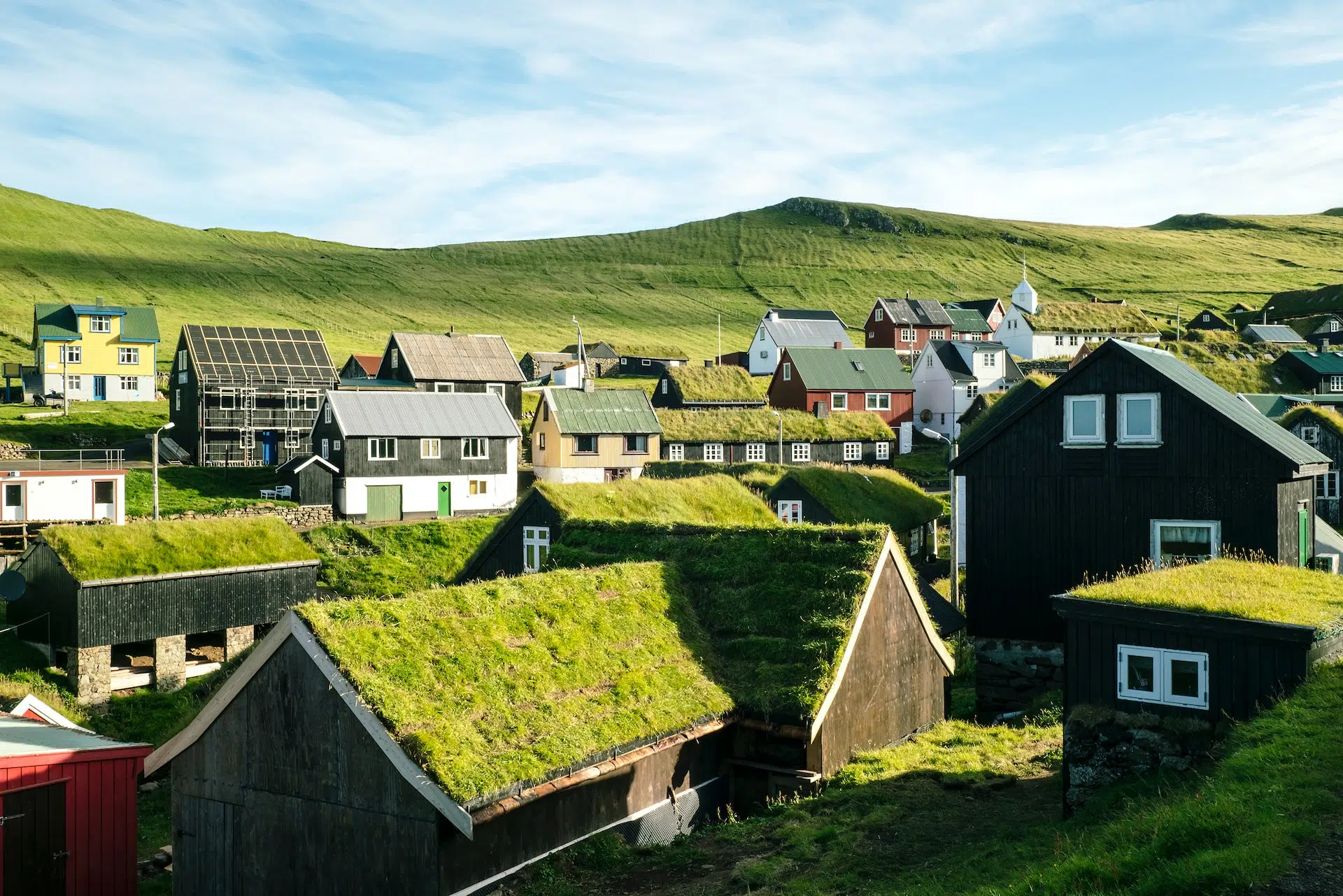Frequently Asked Questions About Faroe Islands
General FAQs for Faroe Islands
Which is the capital city of Faroe Islands?
What currency is used in Faroe Islands?
What are most spoken languages in Faroe Islands?
Which time of the year is best to visit Faroe Islands?
How many days are required for traveling in Faroe Islands?
Which are the emergency numbers in Faroe Islands?
Places FAQs For Faroe Islands
What are the best places to visit in Faroe Islands?
The Faroe Islands have a variety of unique attractions and activities to offer the adventurous traveller. Here are some of our top picks:
– Torshavn: The capital city of Torshavn is a great place to start your visit, as it offers everything from museums and galleries to traditional restaurants and cafés.
– Gásadalur: Located on the island of Vágar, this picturesque village is surrounded by dramatic cliffs and lush green fields. Take a journey up the winding road to see stunning views of the waterfall, Múlafossur.
– Mykines: This small island is home to one of the largest populations of puffins in the world. Take a boat ride around the island and admire the wildlife, or take a hike along the narrow path to get a closer look at these fascinating birds.
– Sørvágsvatn: In this incredible lake, you can experience what is known as ‘the horizontal waterfall’. Stand on the edge of Trøllkonufingur cliff and watch as the water cascades over the side, creating an impressive sight.
– Kirkjubøur: This historic village is home to some of the most important places in Faroese history. Have a wander through its cobbled streets and take in the stunning views of Kirkjubøur Church, St. Olav’s Church and King’s Farm.
How do tourist get around in Faroe Islands?
Budget FAQs For Faroe Islands
How much will the trip to Faroe Islands cost?
What is the cost of average meal in Faroe Islands?
How much is the cost of stay in Faroe Islands?
What is the cheapest time to visit Faroe Islands?
Culture FAQs For Faroe Islands
How are the people in Faroe Islands?
What is the popular food to try in Faroe Islands?
The Faroe Islands have a rich culinary culture that is heavily influenced by the country’s location in the North Atlantic. Popular dishes include:
– Klippfiskur (dried and salted cod): This traditional dish is made with dried and salted cod, potatoes, onions, and cream. It’s often served with boiled potatoes and a cold dip.
– Skerpikjøt (smoked mutton): This is smoked, dried sheep meat that is usually served with potatoes and a white sauce.
– Fiskur (fish stew): A hearty fish stew made with fresh cod, potatoes, onions, carrots, and other vegetables.
– Rakfisk (fermented trout): This traditional dish is made with fresh trout that has been fermented in brine for several months. It’s usually served with potatoes, onions, and cream.
Which sport is the most popular in Faroe Islands?
What are the most popular religions in Faroe Islands?
What are the most popular festivals in Faroe Islands?
The Faroe Islands host a number of popular festivals throughout the year, including:
– St. Olav’s Day (July 29): Celebrating the patron saint of Norway, this festival is celebrated with music, dance, and feasting.
– Summarfestivalurin (August 2 – 3): The largest outdoor music festival in the Faroe Islands, featuring a range of acts from around the world.
– National Day (April 25): Celebrates the liberation of the Faroe Islands from Denmark with parades and other festivities.
– Ólavsøka (July 29 – 30): A two-day celebration culminating in a grand parade and the raising of the Faroese flag.
– G! Festival (July 19 – 22): One of the largest music festivals in the Nordic region, featuring some of Europe’s top acts.
– Saltverk Festival (August 18 – 20): A celebration of traditional Faroese culture with folk dancing, food, and music.
– Winter Festival (December): Enjoy traditional Faroese cuisine, music and dance, as well as a special Christmas market.
– Grooveyard Festival (July 28 – 29): A two-day event celebrating electronic music with international DJs and live acts.
What souvenirs to buy from Faroe Islands?
Faroe Islands offer a range of unique souvenirs for visitors to take home. Some popular items include:
– Knitted sweaters and jumpers: These knitted woollens are made from local Faroese wool and come in a variety of colours and styles.
– Handcrafted jewellery: Faroese silver jewellery is renowned for its intricate designs and craftsmanship.
– Local food products: Faroese delicacies such as smoked fish, dried sheep’s head, and even whale meat can be found in souvenir shops.
– Music albums: Take home some traditional folk music or local bands on vinyl to remember your time in the Faroe Islands.
– Handmade ceramics: Locally made pottery, ceramic mugs and dishes adorned with traditional Faroese designs make great souvenirs.
– Local beer: Try some of the local craft beers brewed in the islands to take home as a unique reminder of your visit.
– Postcards and stamps: Perfect for sending a message to friends and family back home.
– Handwoven tapestries: Traditional Faroese tapestries featuring local patterns, motifs, and colours are great souvenirs of your time in the islands.
















